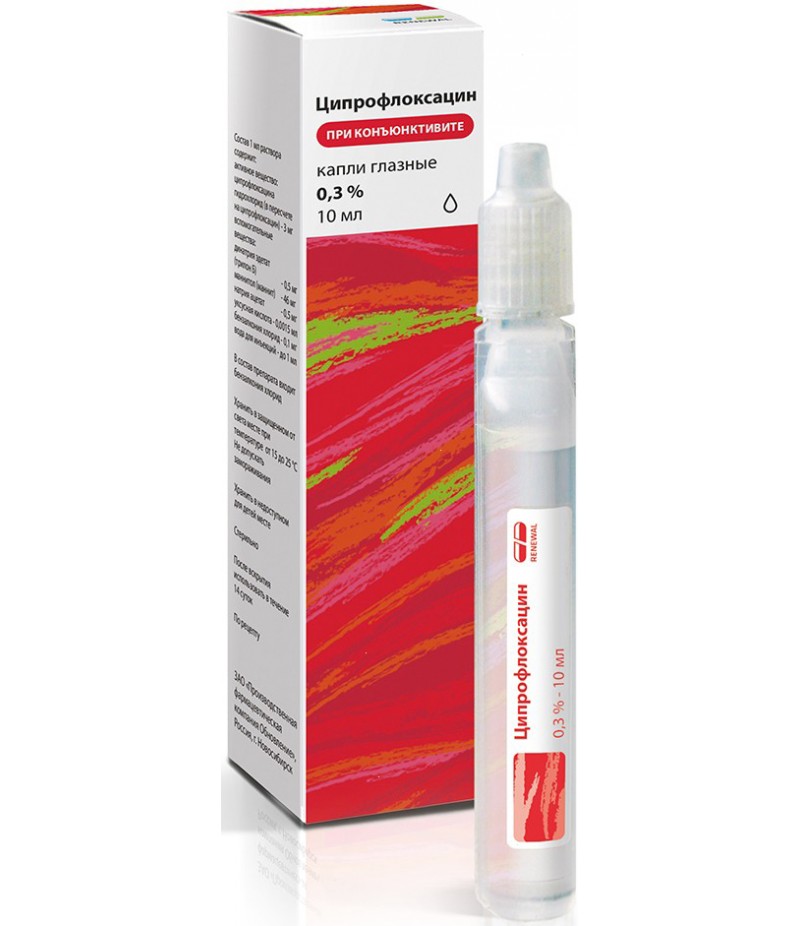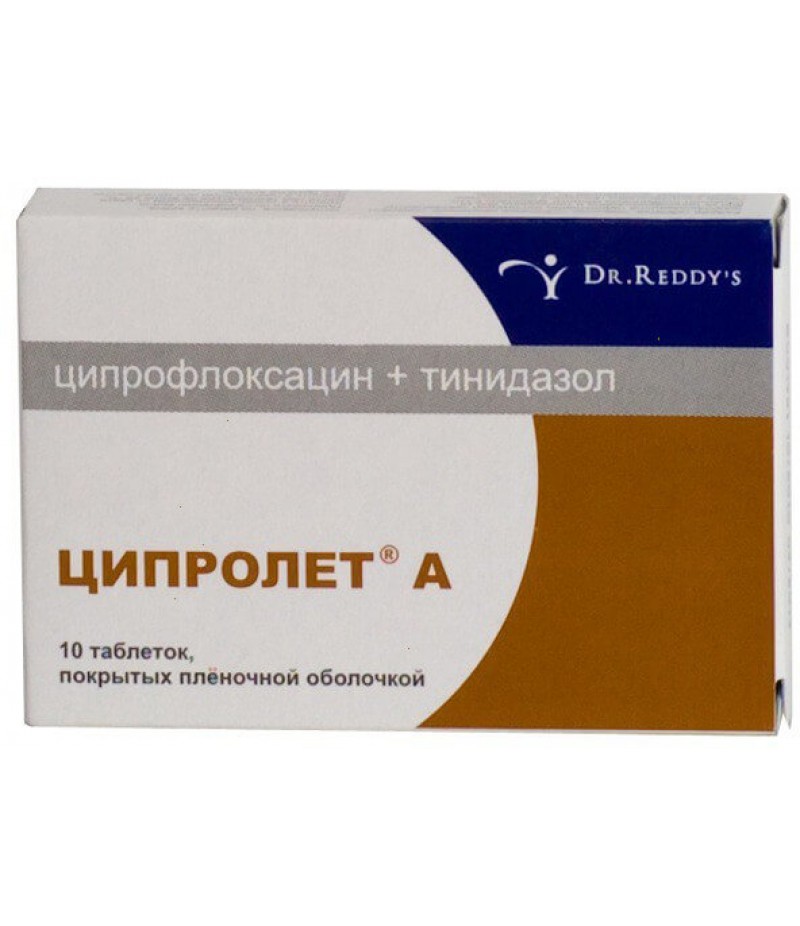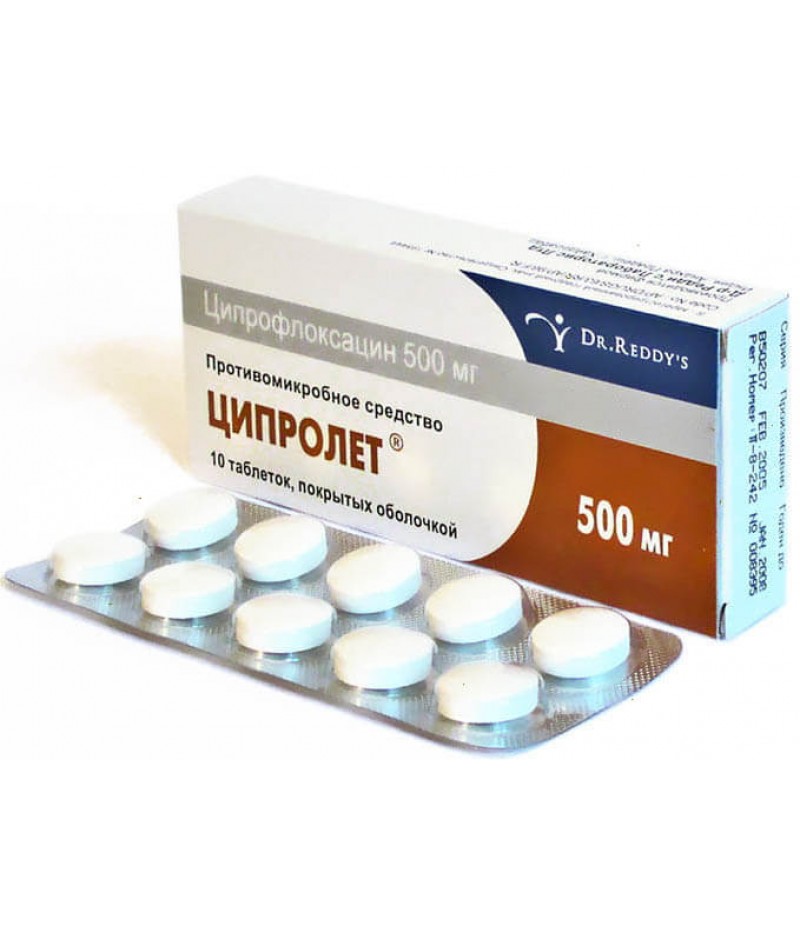Ciprolet drops 0.3% 5ml
- $4.90
- 3 or more $4.70
- Availability:In Stock
Ciprolet drops instruction for useTo buy eye drops Ciprolet just add it to your shopping cartDrops of Ciprolet represent the clinical and pharmacological group of medicines antibacterial preparations
Ciprolet drops instruction for use
To buy eye drops Ciprolet just add it to your shopping cart
Drops of Ciprolet represent the clinical and pharmacological group of medicines antibacterial preparations of the fluoroquinolones group for local application in ophthalmology. They are used to treat various infectious eye pathologies caused by bacteria that are sensitive to the active ingredient of the drug.
Dosage form, composition
Tiprolet drops are a colorless transparent liquid (light yellow color is allowed). The main active ingredient of the drug is ciprofloxacin, its content in 1 ml is 3 mg. Also in the composition of drops are auxiliary compounds, which include:
Benzoalkonium hydrochloride.
Disodium edetat.
Hydrochloric acid.
Sodium chloride.
Water for injections.
Drops Ciprolet are in a plastic bottle with a dropper volume of 5 ml. Cardboard pack contains 1 bottle-dropper, as well as instructions for the use of the drug.
Pharmacological effects
Ciprofloxacin, which is the main active component of droplets of Ciprolet, has a bactericidal effect. It leads to the death of a bacterial cell by suppressing the catalytic activity of the DNA-gyrase enzyme, which is necessary for the normal course of the replication (doubling) of the genetic material of bacteria. This causes the death of bacteria sensitive to the drug, even those that are in the stage of functional rest without dividing the cells. The drug is active against a significant number of gram-positive (staphylococcus, streptococcus), gram-negative (intestinal bacterial groups, including Escherichia coli, Salmonella, Shigella, Pseudomonas aeruginosa, gonococci, Proteus, Klebsiella) bacteria. Also, drops of Ciprolet have a bactericidal action against specific bacteria of intracellular parasites (mycobacterium tuberculosis, chlamydia, ureaplasma, mycoplasma, legionella). There are no reliable data on the activity of the drug in relation to pale treponema (a causative agent of syphilis).
After instillation of eye drops of Ciprolet into the conjunctival sac, the active ingredient is evenly distributed over the surface of the mucosa, where it has a therapeutic effect.
Indications
The main medical indication for the use of Ciprolet drops is the infectious pathology of the eyes and their appendages caused by bacteria sensitive to the active ingredient of the preparation:
Inflammation of the conjunctiva is acute or chronic conjunctivitis.
Bacterial lesion of the eyelids is blepharitis.
Combined inflammation of the eyelids and conjunctiva - blepharoconjunctivitis.
Ulcerous corneal damage, complicated by the attachment of a secondary bacterial infection.
Bacterial inflammation of the cornea (keratitis), which can be combined with damage to the conjunctiva (keratoconjunctivitis).
Chronic inflammation of lacrimal (dacryocystitis) glands and glands of the eyelids (meibomite).
Injuries of the eye, foreign bodies, which can be accompanied by the development of the infectious process.
Also, the drug is used for preoperative preparation of the patient before performing ophthalmic interventions to prevent bacterial complications.
Contraindications
There are several absolute contraindications for the use of eye drops Ciprolet, they include:
Viral infection of the cornea of the eye.
Pregnancy at any time of the current.
Lactation period (breastfeeding).
Children's age is less than 1 year.
Individual intolerance to any of the components of the drug.
Established hypersensitivity to other drugs of the fluoroquinolones group.
With caution, the drug is used in patients with concomitant convulsive syndrome, circulatory disorders in the brain, as well as with severe arterial atherosclerosis of the brain.
Dosage
Drops Ciprolet intended for local use. They are buried in the conjunctival sac of the infected eye. The average recommended dosage for a moderate disease is 1-2 drops every 4 hours. In severe infectious process, it is recommended to instill 2 drops every hour. As the inflammation subsides, the incidence of instillation is reduced. With the development of a bacterial ulcer of the eye cornea, the drug is prescribed according to a 1 drop schedule every 15 minutes for 6 hours, then 1 drop every half hour during the waking period. On day 2 from the beginning of the treatment, one drop is added dropwise every hour, and for 3-14 days, one drop every 4 hours during wakefulness. The average course of therapy is 14 days. If epithelization of the cornea in the area of the ulcer did not occur, then the course of treatment can be extended.
Side effects of Ciprolet eye drops
After instillation of drops of Ciprolet may develop negative reactions from the eyes and their appendages. They include burning, itching, mild soreness, redness of the conjunctiva, photophobia, lacrimation, the appearance of a foreign body sensation (grains of sand) in the eye, reduced visual acuity. Patients with corneal ulcers may develop crystalline precipitate, infiltration. Less likely, the appearance of metallic aftertaste in the mouth immediately after instillation of the drug, nausea, as well as the development of allergic reactions. If any side effects occur, instillation of Ciprolet drops should be discontinued and consult a healthcare professional.
Features of use
Before starting the use of eye drops Ciprolet should carefully read the instructions and pay attention to several recommendations regarding the correct use of the drug:
When used together with other drugs for the local treatment of eye diseases, the interval between their instillations should be at least 5 minutes.
Drops Ciprolet are intended only for instillation, they can not be injected into the anterior chamber of the eye or under conjunctiva.
During the course of therapy with the drug, contact lenses are not recommended.
After instillation of the eye, it is not recommended to perform potentially dangerous work that requires sufficient clearness of vision.
In the pharmacy chain, drops of Ciprolet are dispensed by prescription. It is not recommended that they be used alone, as this can cause negative health effects.
Overdose
Cases of overdose with topical administration of Ciprolet drops have not been reported. With the occasional use of the drug, no specific symptomatology develops. Perhaps the emergence of nausea, vomiting, headache, the development of fainting, seizures. In this case, the stomach, intestines are washed, intestinal sorbents (activated charcoal) are taken, and symptomatic therapy is also administered if necessary. There is no specific antidote for this drug.
Storage
The life of the drops of Ciprolet is 2 years. After opening the bottle, the drops can be stored no longer than 2 months. The drug should be stored in its original undamaged packaging protected from light and moisture at an ambient temperature of no higher than + 25 ° C. Drops should not be frozen. Keep away from children.




